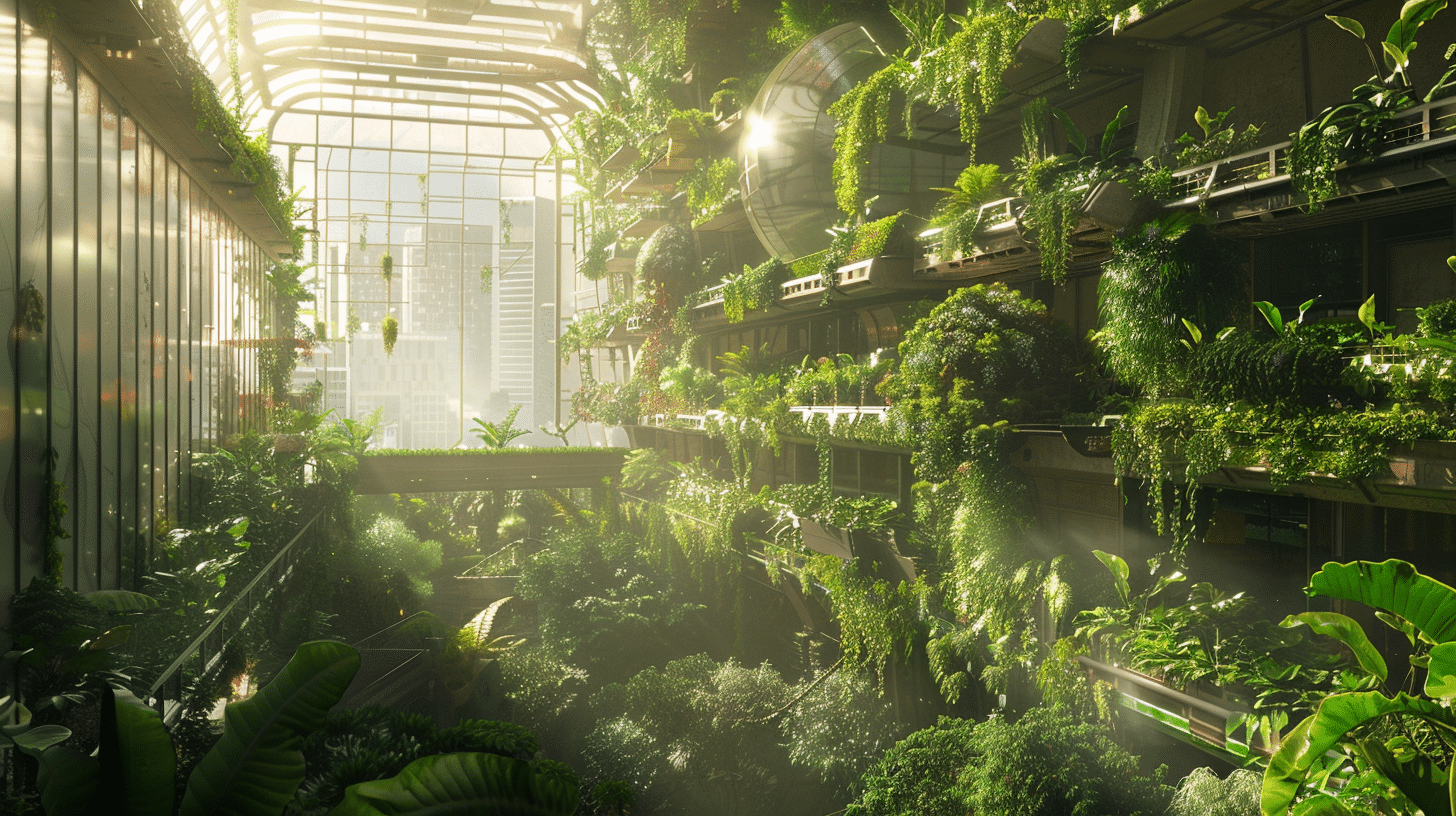How to Develop Real Estate with Integrated Urban Farming and Green Spaces?

In the constantly evolving real estate landscape, the integration of urban farming and green spaces has emerged as an innovative and sustainable approach to community development. As urban sprawl continues to encroach on rural farming land, the idea of bringing the farm to the city is gaining traction. Urban agriculture involves the cultivation, processing, and distribution of food within city limits, often using vertical farms, community gardens, and other inventive agricultural techniques. By integrating these elements into real estate development, we can create sustainable, green, and more liveable communities.
The Intersection of Agriculture and Urban Real Estate
When we think of farming, towering skyscrapers and bustling city streets probably aren’t the first images that come to mind. However, a new breed of real estate developers is challenging this notion by incorporating agricultural elements into their projects.
Also to discover : How to Optimize Property Management with AI-Based Predictive Analytics?
Urban farming, once considered a fringe movement, has emerged as a significant player in the future of food production. With land increasingly at a premium, the vertical farming model – where crops are grown in stacked layers within controlled environments – has become a particularly attractive option. These vertical farms can be integrated into existing buildings or designed as standalone structures, offering a productive use of space in densely populated urban areas.
Real estate developers are also finding value in smaller-scale community gardens embedded within residential complexes. These shared spaces not only provide residents with access to fresh, local produce but also serve as gathering spaces, fostering a sense of community and connection among residents.
Also to read : How to Create a Strategic Plan for Real Estate Asset Upgrading?
The Benefits of Green Spaces in Urban Developments
Green spaces are an essential aspect of urban developments, offering numerous benefits for residents and the wider community. It’s not just about aesthetics – green spaces can reduce urban heat, improve air quality, and even boost mental well-being.
When considering green spaces in an urban setting, one often thinks of parks and gardens. However, many other forms of green space are increasingly being incorporated into real estate projects. For instance, green roofs and walls, often planted with native species, are a common feature in many new buildings. These help to mitigate the ‘heat island’ effect – a phenomenon where urban areas become significantly warmer than their rural surroundings due to human activities.
Furthermore, green spaces in the form of community gardens or vertical farms offer an opportunity for residents to connect with nature, even amidst the concrete and steel of the city. By giving residents access to green spaces, developers can enhance quality of life and even contribute to improved health outcomes.
Urban Agriculture and the Local Food Market
Urban farming brings the food market to the doorstep of city dwellers. It is a dynamic sector that can revolutionize local food supply chains, making fresh, locally grown produce more accessible to urban residents.
Vertical farms, community gardens, and similar initiatives bring food production closer to consumers, reducing the distance that food has to travel from farm to fork. This not only reduces the carbon footprint associated with food transportation, but also ensures that produce is fresher when it reaches consumers.
Additionally, urban farming can stimulate local economies by creating jobs, especially in areas with high unemployment. It offers a pathway for urban residents to become involved in the food production process, fostering community engagement and strengthening local food systems.
A Sustainable Future for Real Estate Development
By integrating urban farming and green spaces into real estate development, we can move towards a more sustainable and resilient urban future. This approach reimagines the city not as a concrete jungle, but as a living, breathing ecosystem that supports agriculture, fosters community, and provides much-needed green space.
The sustainable real estate model is about more than just buildings – it’s about creating spaces where people can live, work, and interact in harmony with their environment. By prioritizing the integration of green spaces and urban farming into their projects, real estate developers can create vibrant, thriving communities that are ready for the challenges of the future.
There is a growing recognition among professionals in the real estate sector that integrating urban farming and green spaces is a smart and forward-thinking approach. With the continuous growth of cities and the increasing demand for sustainable, locally sourced food, the time is ripe for reimagining how we use urban spaces. The future of urban development lies in the successful marriage of real estate, agriculture, and the need for green spaces. It’s no longer just a question of how we can develop real estate that integrates urban farming and green spaces – it’s about why we must.
The Role of Real Estate in Supporting Urban Agriculture
In recent times, the role of the real estate sector in supporting urban agriculture has become more pronounced. This is because urban farming plays a key role in transforming city landscapes into sustainable ecosystems. Real estate developers now consider vertical farms, community gardens, and other urban agriculture initiatives as vital components of their projects.
Vertical farms, in particular, are becoming increasingly popular in densely populated urban areas. This method of food production involves growing crops in vertically stacked layers, often inside buildings. It maximizes the use of space, a critical factor in urban development, while providing ample opportunity for food production. Vertical gardens imbue the cityscape with a touch of nature, offering both aesthetic and practical benefits.
On the other hand, community gardens are becoming integral parts of residential complexes. These green spaces provide residents with direct access to fresh and healthy food. They also support urban farmers by providing them with farming spaces within the city, thus shortening the food supply chain and promoting food security.
The benefits urban agriculture brings are multifaceted, touching on socio-economic, environmental, and health aspects. By supporting urban farming initiatives, the real estate market is playing its part in promoting sustainable urban living and transforming the city landscape.
The Future of Real Estate: Integrated Urban Farming and Green Spaces
Looking forward, the future of real estate development is intertwined with the growth of urban farming and the expansion of green spaces. These elements are no longer just add-ons or afterthoughts. Instead, they are now at the forefront of sustainable real estate development.
The integration of urban farms and green spaces into real estate development is not just an innovative approach but a necessary one. As cities expand, the need for sustainable, locally sourced food and green spaces becomes more pressing. Real estate developers must therefore work hand in hand with urban farmers and environmental consultants to ensure that their projects are sustainable and beneficial to the community.
For instance, the cultivation of food in vertical farms within residential and commercial buildings can help meet the healthy food needs of the urban population. Meanwhile, green spaces such as community gardens can provide residents with a place to relax, socialize, and connect with nature, improving their overall well-being.
The integration of urban farming and green spaces into real estate development is about creating cities that are liveable, sustainable, and resilient. It’s about transforming the concrete jungle into a green metropolis where residents can enjoy the benefits of rural and urban living simultaneously.
In conclusion, the future of real estate lies in its ability to integrate urban farming and green spaces into its projects. This approach aligns with the global push towards sustainability and resilience, making it both a smart and necessary choice for real estate developers. It is an exciting time for the real estate market, as it plays a pivotal role in shaping the cities of the future. With this in mind, it’s clear that the marriage of real estate and urban farming is not just a passing trend, but a paradigm shift that’s here to stay.
